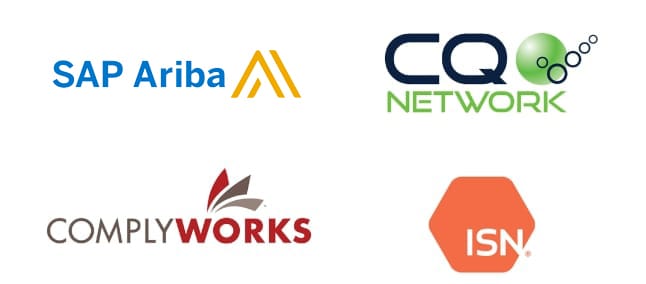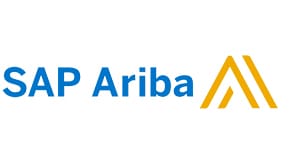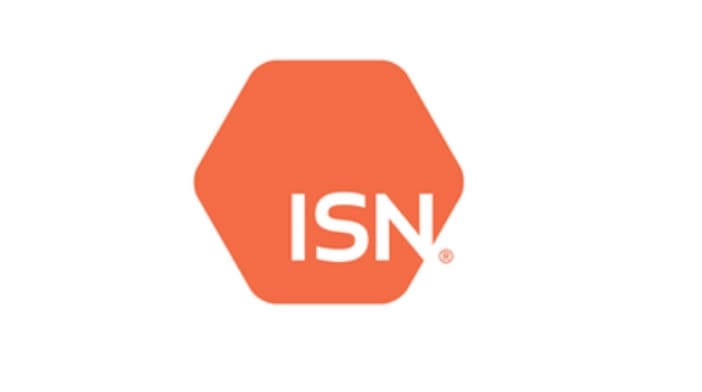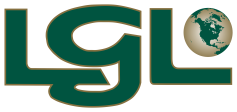SERVICES
With a focus on vegetation, fisheries, and wildlife, our services are as diverse as the environments in which we work.





DELIVERING CUSTOMIZED PRODUCTS AND SOLUTIONS
From hands-on resource inventories and biological assessments to digital mapping to project design and management, our team of experts can deliver customized products – and solutions – for a wide range of environmental challenges.
Since 1971, LGL Limited has combined proven methodology and state-of-the-art technology to achieve – and exceed – our clients’ goals and objectives.
We adhere to strict Health, Safety, and Environment (HSE) standards and we’ve held our Certificate of Recognition in British Columbia and Alberta since 2013. We are also enrolled with several compliance management and risk management solutions including Ariba, ComplyWorks, CQ Network, and ISN.
MARINE MAMMAL AND ACOUSTIC RESEARCH
Scientists from LGL have experience working with:
- Cetaceans (whales, porpoises, dolphins)
- Pinnipeds (seals, sea lions, walrus)
- Polar bears
Specialized services:
- Aerial, vessel, and shore‑based surveys
- Marine mammal observers
- Measurements of underwater and in‑air noise
- Passive acoustic monitoring
- Radio and satellite telemetry
- Geographic information systems (GIS) and remote sensing
- Environmental management and planning
For over 50 years, LGL has conducted marine mammal research and monitoring along the Atlantic, Pacific, Arctic and Gulf of Mexico, coasts of Canada and the U.S.A., as well as numerous projects overseas.
Objectives of our projects can include:
- Environmental impact assessments (U.S. NEPA compliance)
- Incidental Harassment Authorization (IHA) and Letter of Authorization (LoA) applications for U.S. Marine Mammal Protection Act compliance
- Literature reviews
- Mitigation and monitoring of potential effects of development and disturbance
- Seasonal distribution and abundance
- Foraging ecology
- Habitat use assessment
- Photography and photo‑identification / cataloguing
FISHERIES RESEARCH AND MANAGEMENT
Scientists from LGL have fisheries experience working with:
- Anadromous species (adult and juvenile salmon, Pacific lamprey)
- Marine species (halibut, rockfish, eulachon, herring, tuna, coral reef species)
- Freshwater species (trout, bull trout, burbot, white sturgeon)
- Invertebrates (crab, lobster, shrimp, molluscs, bivalves)
- Aquatic habitats (freshwater and marine)
Objectives of our research projects commonly include:
- Distribution, abundance, and population dynamics
- Design and implementation of harvest management plans
- Impact assessments and mitigation strategies
- Habitat enhancement, restoration, and management
- Run reconstruction analyses
- Capacity building
- Analysis and review of complex fisheries issues
- Bycatch analysis and mitigation
Specialized methodologies:
- Radio-telemetry (VHF, fixed station, mobile boat‑based, mobile aerial)
- Acoustic telemetry, 3‑D analysis
- Selective fishing methods (fishwheels, weirs, and various net-capture techniques
- Computer programming and simulation modelling
- Advanced statistical analysis
- Geographic information systems (GIS) analysis
- Telemetry Manager (proprietary software developed and owned by LGL)
- Hydroacoustics (including DIDSON and sidescan sonar)
- Aerial surveys
- Animal marking techniques (surgical [peritoneal] implants, Floy tags, PIT tags, esophageal implants, operculum tags, elastomer dyes)
- Underwater video monitoring
- Tracking of fishing vessels and effort using GPS (electronic logbooks)
WILDLIFE RESEARCH AND MANAGEMENT
Objectives of our research programs commonly include:
- Distribution, abundance, and population dynamics
- Habitat assessment
- Endangered species assessments
- Effects of development
- Behaviour and disturbance
- Habitat enhancement, restoration, and management
- Harvest management
Scientists from LGL have expertise working with:
- Birds
- Mammals
- Reptiles and amphibians
- Invertebrates
- Wildlife habitats
Specialized skills and methodologies we use in our wildlife studies:
- Aerial surveys
- Ground surveys
- Global positioning system (GPS)
- Geographic information systems (GIS) and remote‑sensing
- Radio-telemetry
- Radar
- Habitat evaluation procedures (HEP)
- Movement monitoring
- DNA tracking
- Live trapping and tagging
- Remote video monitoring
- Computer modeling and advanced statistical analysis
- Database management
RARE AND ENDANGERED SPECIES SURVEYS AND MANAGEMENT
LGL has expertise with sensitive species in Canada, the United States, and abroad:
- Amphibians and reptiles
- Birds, including raptors and owls
- Fish
- Marine mammals and sea turtles
- Terrestrial mammals
- Terrestrial molluscs
Objectives of Rare and Endangered Species work often includes:
- Presence and distribution mapping
- Habitat relationships
- Monitoring
- Impact assessment
- Mitigation measures
- Recovery strategies
- Land use allocations
- Forestry / wildlife interactions
Rare and Endangered Species work in support of:
- SARA
- COSEWIC Status Reports
- Survey and Manage / Northwest Forest Plan
- NEPA, MMPA
- Mitigation measures
- Permitting and Re‑licensing
WATERSHED ASSESSMENT AND RESTORATION
Our projects typically include:
- Assessment and restoration of wetland, riparian, and upland habitat
- Condition assessments of aquatic habitat and watershed processes
- Preparation of integrated watershed, fish, wildlife, and habitat recovery plans
- Designing channel, riparian, and habitat restoration measures
- Construction supervision during the restoration of rivers, streams, and critical fish and wildlife habitats
- Effectiveness monitoring of completed restoration projects
LGL scientists take a multi‑disciplinary approach to watershed assessment and restoration and have expertise in:
- Fish biology and habitat
- Wildlife biology and habitat
- Vegetation
- Hydrology
- Watershed dynamics
- Riparian, stream, wetland, and upland habitat restoration
Key steps in our focus approach to assessment and restoration involve:
- A watershed overview of current conditions through air photo interpretation and reconnaissance level field surveys
- Detailed habitat assessments and identification of priorities for restoration
- Topographic surveys of potential restoration sites and preparation of restoration designs
- Integration of fish, wildlife, and vegetation requirements and consideration of site constraints in restoration design
- Construction supervision and effectiveness monitoring of restoration project
WATER QUALITY AND CONTAMINANTS
Scientists from LGL have expertise related to:
- Eutrophication and nutrient issues in aquatic systems
- Mercury, cadmium, selenium, and other metal contaminants
- Polycyclic aromatic hydrocarbons and polychlorinated biphenyls
- Acid rock drainage and metal leaching
- Hydrocarbon and other organic contaminants
- Sediment loading from erosion
- Water balance modeling and contaminant mass balance modeling
- Characterization of physical characteristics such as temperature, salinity, conductivity, and dissolved oxygen
- Effects of contaminants on human and environmental health
Objectives of our investigations commonly include:
- Environmental impact evaluation
- Mine planning and remediation
- Lakeshore development planning
- Sediment control mitigation
- Restoration of aquatic habitats
- Aquaculture impact evaluation and planning
- Evaluation of human health concerns
- Inventory and basic characterization of lakes and streams
Specialized methodologies:
- Development of water quality standards and guidelines (general and site‑specific)
- Establishing tissue‑residue benchmarks for dioxins/furans in fish
- Acute and chronic toxicity testing
- “Clean” sampling of water, biota, and sediments for contaminant measurement
- In situ measurement of aquatic physical and chemical parameters
- Statistical analysis and interpretation of contaminant concentration information
- Measurement of chlorophyll and other indicators of primary productivity
- Identification of phytoplankton and zooplankton as indicators of water quality
- Sediment control strategies as part of aquatic habitat restoration
BIOLOGICAL OCEANOGRAPHY AND LIMNOLOGY
Scientists from LGL have expertise relating to:
- Marine mammals
- Marine birds
- Fish
- Zooplankton and phytoplankton
- Benthos
- Water sediment and quality
- Shoreline habitat and processes
- Aquatic plants
- Modelling and statistics
Examples of our research and studies include:
- Environmental assessments and impact statements
- Environmental monitoring
- Baseline studies
- Resource inventories
- Trophic and productivity studies
- Feeding studies
- Literature reviews and information management
- Habitat and community classification
- Taxonomic studies
- Hydrologic studies
LGL’s capabilities include:
- Shipboard surveys and biological observers
- Aerial surveys
- Lake and stream surveys
- Remotely deployed instruments and sensor packages
- Radio and acoustic telemetry tracking
- Remote sensing
- 3-D modelling and geographic information systems (GIS)
- Video surveys
- Acoustic surveys
VEGETATION AND HABITAT ASSESSMENT
Scientists from LGL have expertise concerning:
- Inventories of plant species (including mosses)
- Inventories of fungi / mushrooms and lichens
- Vegetation mapping and classification
- Ecosystem mapping
- Rare and endangered plant species
- Rare and endangered plant associations
Objectives of our projects often include:
- Assessments of Habitat suitability for various plants and animals
- Habitat modeling
- Effects of development and/or disturbance on vegetation
- Effects of development and/or disturbance on individual (rare or otherwise important) plant species
- Ecosystem classification for baseline studies and inventories
- Determination of sensitive ecosystems
- Development of mitigation and restoration strategies for disturbed habitats
- Recultivation and monitoring
Typical projects include:
- Assessment of projected impacts on rare and endangered plant species and rare plant associations in areas slated for development
- Assessment of the impacts to rare and endangered plant species and rare plant associations along linear structures (pipelines, right‑of‑way, highways, etc.)
- Restoration of altered / disturbed habitats
- Assessment of the effectiveness of vegetation management
Specialized methodologies:
- Global positioning system (GPS)
- Vegetation sampling equipment
- Habitat evaluation procedures
- Geographic information systems (GIS)
- Habitat modeling
- Multivariate statistical analyses: Ordination (Principal Components, Canonical Correlation, [Detrended] Correspondence Analysis); Classification (various clustering techniques, TWINSPAN, Marxan)
- Distance sampling and analysis
ENVIRONMENTAL MANAGEMENT AND PLANNING
LGL scientists have expertise with a wide range of environmental management and planning projects for Government, First Nations, and Industry.
Our staff has experience in the following areas:
- Watershed management
- Natural heritage assessment
- Residential and recreational development
- Management and land use plans
- Integrated resource management
- Fisheries and wildlife management planning
- Riparian area regulations
Scientists from LGL have expertise related to:
- Eutrophication and nutrient issues in aquatic systems
- Mercury, cadmium, selenium, and other metal contaminants
- Polycyclic aromatic hydrocarbons and polychlorinated biphenyls
- Acid rock drainage and metal leaching
- Hydrocarbon and other organic contaminants
- Sediment loading from erosion
- Water balance modeling and contaminant mass balance modeling
- Characterization of physical characteristics such as temperature, salinity, conductivity, and dissolved oxygen
- Effects of contaminants on human and environmental health
Objectives of our environmental management and planning support commonly include:
- Salmon recovery plans
- Water quality assessment
- Contaminant source identification and analysis
- Watershed assessment and restoration
- Resource inventory
- Impact assessment
- Facility siting and planning
- Mitigation planning
- Public meetings
- Construction monitoring
- Management plan development for First Nations, Municipalities, Rare and Endangered Species, and National and Provincial Parks
- Integrated resource management planning for Logging, Mining, Oil and Gas, and Recreational and Subsistence Harvests
Specialized methodologies, products, and services include:
- Site and route selection
- Environmental impact assessment (EIA) (Federal and Provincial)
- Participation in project design teams
- Spatial analysis and mapping
- Mitigation planning
- Input into community plan amendments and rezoning applications
- Habitat enhancement strategies
- Development of design and operations guidelines and Best Management Practices
- Construction monitoring
PROJECT MANAGEMENT
LGL project managers have expertise in:
- Day-to-day management and administration of LGL service contracts
- Acting as lead consultants on multi‑disciplinary environmental studies
- Serving as project managers on behalf of third parties such as Government and First Nations
Our philosophy regarding project management incorporates:
- Early communication to ensure a full understanding of the client’s needs
- Preparation of realistic work plans and budgets
- Frequent communication with the client and among members of the project team
- Ongoing monitoring of project progress
- Early identification of project problems and solutions
- Timely reporting
- Working within budget
Some recent examples of significant project management work include:
- Continuous management of the fisheries research and assessment programs on coastal British Columbia for the Nisga’a Nation since the early 1990s
- Management and coordination of Gray Whale research in the western Pacific Ocean
- Project management and administration for the Fraser River Conservation Society
- Coordination and facilitation of the Canada – South Pacific Ocean Development (C‑SPOD II) Program on behalf of the Canadian International Development Agency
- Coordination or management of Treaty negotiations and associated land and resource related programs on behalf of First Nations in northern British Columbia
- Management of a multi‑disciplinary team to review the state of knowledge of marine and shoreline areas in the Queen Charlotte Basin in coastal British Columbia
ENVIRONMENTAL IMPACT ASSESSMENT
LGL Limited provides a full range of Environmental Assessment services including:
- Initial Environmental Evaluations and Overview Assessments
- Environmental Impact Assessments – CEAA (Canadian Environmental Assessment Agency) Screenings and Comprehensive Studies
- Environmental Assessments and Environmental Impact Statements – NEPA (U.S. National Environmental Policy Act) compliance
- Incidental Take Authorizations – MMPA (Marine Mammal Protection Act) compliance
- Biological Assessments – ESA (Endangered Species Act) compliance
- Coastal Zone Management Act Consistency Reviews
- Natural Heritage Assessments
- Stream Crossing Studies for Linear Developments
- Route Selection
- Environmental Monitoring in Terrestrial, Aquatic, and Marine Environments
- Cumulative Effects Assessment
- Mitigative Measures
- Compensation Planning and Works
- Riparian Area Regulations
A wide variety of specialized methodologies are used to guide projects through the Environmental Assessment process including:
- Adaptive Environmental Assessment Techniques
- Environmental Information Systems
- Matrix Construction and Screening
LGL has experience dealing with a wide range of clients and resource sectors, some of which are listed below:
- Offshore and Onshore Wind Developments
- Oil and Gas Exploration, Production, and Reclamation
- Military Facilities / Operations
- Airports
- First Nations (e.g., CEAA Screenings compliant with INAC requirements)
- Hydro and Power Developments
- Tourism, Recreation, and Urban Developments
- Pipelines and Linear Developments
- Mining, Mineral and Aggregate Exploration, Development, Extraction, Processing, and Reclamation
- Fisheries and Marine Activities
- Forestry and Parks
DATA MANAGEMENT AND ANALYSIS
LGL data analysts are experts in study design, data management, and data visualization
- In-depth study design, planning (e.g., power analyses), analysis, and reporting
- Manual and automated data processing, storage, and quality assurance
- Data visualization, including Shiny web applications
- Software development, including desktop and multi‑platform mobile applications
- Machine learning with a focus on computer vision and object detection
Custom database design, data quality assurance, and data & report automation
- Database schema tailored to meet the needs of complex projects
- Database technologies using local databases focused on ease‑of‑use, to cloud‑based solutions that include data security and collaboration
- Data entry applications, including real-time data uploading and quality assurance
Custom software development and web applications
- Desktop and mobile data entry apps
- Web-based Shiny applications for modeling, analysis, data processing, and management strategy evaluation exercises
- Scripts (R, Python, Julia) to facilitate data processing and analytical tasks
- Customized machine learning (ML) applications
LGL data analysts are proficient with a wide array of standard and innovative approaches
- Parametric and nonparametric methods
- Generalized linear model, regression, and ANOVAs
- Mixed effect modelling and additive models
- Custom Bayesian hierarchical models
- Permutation tests, bootstrapping, Monte-Carlo simulations
- Time-series models including auto-regressive models
- Spatial regression‑kriging and spatial‑temporal analysis
- Spatial dispersion models
- Multivariate analysis: including canonical analysis, clustering, regression trees, ordinations
- Mark-recapture modelling of abundance, survival, and occupancy
- Bioenergetic and life-cycle modelling
- Analysis of long‑term monitoring data with wildlife cameras
- Analysis of large acoustic datasets from Autonomous Recording Units (ARUs) for birds, amphibians, and bats, including using bat classifiers, and the use and development of species specific recognizers for birds/amphibian species
- Design and analysis of creel (fisheries monitoring) datasets
GIS, MAPPING, AND SPATIAL ANALYSIS
LGL offers comprehensives services and complete solutions including:
- Feasibility studies and geodatabase design
- Field data collection and data conversion
- Optical and radar image processing
- Metadata management and data QA / QC
- Spatial analysis, geostatistics, and predictive modelling
- Cartographic design and interactive (online) mapping
- Hydrological modelling, analysis, and visualization
- GIS and remote sensing automation and custom applications development
Some examples of types of studies:
- Watershed modelling for fisheries production and habitat capability
- Wildlife habitat capability / suitability / effectiveness modelling
- 3-dimensional analysis of fish movements from telemetry tracking data
- Analysis of wildlife distributions and population size from transect and point sampling data
- Acoustic impacts on marine biota
- Oil spill sensitivity mapping
- Identification of sensitive areas
- Data quality assessment and metadata systems
- Fisheries run reconstruction modelling
- Marine ecological classification
- Analysis of alternative routes for subsea pipelines
- Land selection for First Nations Treaty negotiations
Selected facilities and capabilities:
- ArcGIS for Desktop, ArcGIS Pro, Global Mapper
- Open Source GIS Stack (QGIS, SAGA, GRASS, GDAL, Spatialite)
- Python and R geospatial development and scripting
- C-Tech’s EVS Pro (3‑dimensional analysis and modelling)
- MapInfo and MapBasic
- Custom software for field data collection using handheld computers
- Custom software for real-time analysis of large datasets
- Database design and data management for MS SQL and PostgreSQL
POLICY AND GUIDELINE DEVELOPMENT
LGL professional staff have experience in conducting program audits and in developing procedures, guidelines, and policies relating to:
- Fish habitat and fisheries management
- Management of wildlife and wildlife habitat
- Wildlife control measures at airports and along transportation corridors
- Aquaculture development
- Watershed management
- Natural resource management
- Environmental assessment methodologies
- Administrative procedures for First Nations
- Consultation procedures for First Nations
Some specific examples of this type of work include:
- Audit of the resource assessment and related research function of the Department of Fisheries and Oceans
- Environmental assessment procedures for National Park management plans
- Procedures to assess the suitability of lakes and ponds for aquaculture in Newfoundland
- Overview fish habitat assessment procedures for British Columbia
- Framework for conducting effectiveness evaluations of watershed restoration projects for Forest Renewal British Columbia
- Manual of airport wildlife control methods for Transport Canada
- Legislation for the Muskwa-Kechika Special Management Area in British Columbia
- Methods and manual to protect fish habitat and passage at stream crossings in Newfoundland
- Spreadsheet-based method to use predicted water quality changes as a lakeshore development planning tool for recreational lakes in Muskoka, Ontario
- Land and resource consultation procedures for First Nations in British Columbia
EXPERT WITNESS AND TESTIMONY
LGL provides trusted scientific expertise to support legal, regulatory, and environmental cases. Our team of senior scientists and analysts translates complex ecological and technical data into clear, defensible testimony for hearings, tribunals, and court proceedings.
Our areas of expertise include:
- Wildlife and habitat assessments
- Fisheries and aquatic systems
- Wetlands and vegetation
- Contaminants and ecotoxicology
- Environmental permitting and compliance
Our experts have decades of field experience, publish in peer-reviewed journals, maintain strong professional credibility and membership in bodies governing our work.
Services we offer include:
- Case Review and Strategy – Early evaluation of data and issues to support legal positioning
- Technical Analysis and Peer Review – Independent evaluation of environmental data, modeling, reporting, and forensic review
- Reports and Declarations – Clear, scientifically robust documentation prepared for legal contexts
- Depositions and Court Testimony – Expert testimony that communicates science effectively to decision-makers
- Litigation Support – Close collaboration with legal teams to strengthen case strategy



